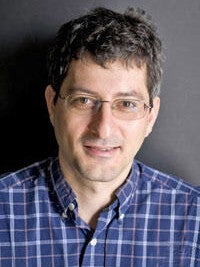Calorimetry has long been used to study chemical reactions and phase transitions in materials. The technique finds its origin in the mid-18th century when Scottish physician Joseph Black discovered the notion of latent heat and Lavoisier developed an ice calorimeter to measure the amount of heat given off during combustion of carbon or respiration of living organisms. Since then, calorimetry has developed into a sophisticated technique indispensable in chemistry and materials science.
In this talk, I will show how the same technique can be used in the context of materials development. We use micromachining techniques to fabricate arrays of calorimetric sensors that can perform measurements on samples as thin as a few nanometers at rates varying from isothermal to 105 K/s. The sensor arrays are ideally suited to explore complex materials systems using a combinatorial approach based on sputter-deposited thin film composition spreads, especially when guided by computational materials science modeling. The methodology is illustrated for high-temperature shape memory alloys.
Because of its large dynamic range, nanocalorimetry is ideal for evaluating the kinetics of solid-state and solid gas reactions. As an example, we use nano-calorimetry to evaluate the kinetics of solid-state reactions in Zr/B and Zr/B4C multilayers and demonstrate that ultra-high temperature ceramics such as ZrB2 and ZrB2/ZrC alloys can be synthesized at moderate temperatures. Calorimetry traces show that the formation reactions typically proceed in two distinct steps: inter-diffusion and amorphization, followed by crystallization. First principles calculations provide insight in the amorphization processes in the reactive multilayers and confirm the relatively low activation energies associated with these processes.
Finally, a new isothermal calorimetry sensor with applications in biophysics will be discussed. We demonstrate the capability of the sensor by probing the energetics of an active microtubule gel that is driven by molecular motors and that displays emergent large-scale flows. Surprisingly, we find that only a minute fraction of the system’s total energy dissipation stems from these emergent flows and that this cannot be explained by a motor subpopulation that hydrolyzes ATP without contributing to the emergent flows. We have developed a chemical kinetics model that quantitatively captures how the total dissipation varies with ATP and microtubule concentrations and estimate the energy losses across scales.

Joost J. Vlassak is currently the Abbott and James Lawrence Professor of Materials Engineering at Harvard University. Dr. Vlassak received his PhD degree in Materials Science from Stanford University. After working for several companies in Silicon Valley, Dr. Vlassak joined the School of Engineering and Applied Sciences at Harvard University in 2000. Dr. Vlassak is active in the field of the thermo-mechanical behavior of materials. He has developed experimental methods to characterize phase transitions and solid-state reactions in thin films, plastic deformation of coatings, elastic anisotropy in indentation, and fracture of thin films. Current research projects focus on fracture of hydrogels and biodegradable polymers, mechanical reliability issues in 3DICs, combinatorial calorimetry, and calorimetry sensors for metabolic rate measurements in biological systems. Dr. Vlassak is co-author of more than 200 peer-reviewed scientific publications and several book chapters, and holds 7 US patents.

